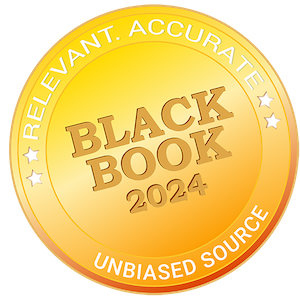
According to a new report by the American Hospital Association, administrative costs now make up over 40% of total hospital expenses. Hospitals and health systems spend around $40 billion annually on billing and collections alone. For revenue cycle managers, the pressure is building as administrative tasks like insurance eligibility verification, claims management and payment processing overwhelm their teams and drain budgets.
However, a sizeable chunk of these costs—perhaps as much as $18.3 billion—could remain in hospitals’ hands if certain administrative tasks were automated. Automating key revenue cycle management (RCM) workflows improves efficiency, accuracy and cash flow, while easing staff stress and expediting patient care. Could it be the secret weapon to alleviating administrative burdens? This article looks at the issues in further detail, and explores 5 use cases that show how automation can reduce administrative costs in healthcare.
Understanding administrative costs in healthcare
Spending on healthcare administration in the U.S. has risen from $654 per person in 2013 to $925 in 2021. Administrative costs cover the resources needed to manage the non-clinical aspects of care. These resource requirements are immense in a complex system with multiple payers, fragmented data systems and growing regulatory demands. Add persistent staffing shortages and increasing patient volumes to the mix, and it’s easy to see how costs spiral out of control – especially when relying on inefficient systems.
The billions of dollars and hours of staff time consumed by administrative tasks make it clear that resources are not being used most effectively. This is where automation can make a difference.
The role of automation in healthcare
Automation reduces human errors, speeds up workflows and accelerates cash flow. It frees up time, money and headspace to optimize services and improve patient experiences. It’s no wonder it’s gaining traction in revenue cycle management.
However, many providers are not fully capitalizing on automation’s potential: Experian Health’s latest State of Claims 2024 report shows that fewer healthcare administrators feel their organization’s technology is sufficient to meet RCM demands compared to two years ago. How can they tap into the benefits of automation to reduce administrative costs?
Benefits of automation and how it can reduce administrative costs in healthcare
Automating healthcare administration is about doing more – and better – with less. Some of the benefits include:
- Fewer errors in billing, coding and claims management. Fewer mistakes mean fewer denials, which translates to faster payments and less rework.
- Reducing time to get paid, as automated processes speed up claim submissions, insurance verification and payment collections. Cash flow improves and staff spend less time chasing payments.
- Alleviating staffing shortages, as automation takes care of repetitive tasks like data entry, payment reminders and reporting. Management can reduce the burden on overworked staff and curb training costs, while teams can focus on “value-added” work.
- Improving efficiency in every corner of the revenue cycle. Automating routine tasks makes the entire billing and revenue cycle process more efficient, allowing teams to handle more work in less time without increasing headcount.
- Happier patients (and a better-looking bottom line). Automation makes it easier for patients to understand their bills, set up payment plans and pay their balances online. Satisfied patients are more likely to pay on time, reducing the cost of chasing overdue payments.
Implementing automation in healthcare
When it comes to reducing administrative costs, selecting the right parts of the workflow to automate is key. Here are five possible use cases to consider:
1. Streamline insurance eligibility checks
“Checking if my insurance was accepted was a fast and friendly process. The staff even helped clarify which insurance was the right one for me since I had multiple cards.”
This is what one patient at Providence Health said, after the health system switched to automated insurance eligibility verification. Insurance Eligibility Verification connects to over 900 payers and automatically checks patients’ coverage and plan-specific benefits information in real-time. This reduces the manual effort required by staff and prevents the delays and denials that lead to additional administrative costs. As the patient notes, it means patients get early clarity about how their care will be funded, so there are no surprises later.
Read the case study: How Providence Health found $30M in coverage and reduced denials with automated eligibility checks.
2. Automate claims submission
More than half of healthcare administrators say that claims errors are increasing. A quick win would be to use automation to pre-fill patient data and avoid the inconsistencies and typos that occur with manual input. A more significant gain could come from combining multiple automations to populate, check and track claims submissions. Tools like ClaimSource® can automate the entire claims cycle in a single application. Indiana University Health (IU) utilized ClaimSource to process $632 million in claims transmissions in just one week, after a halt to their operations.
Summit Medical Group paired Claim Scrubber with Enhanced Claims Status to improve claims submission. Claim Scrubber ensures all claims are complete and accurate before being sent to the payer, and generates alerts so staff can intervene quickly if an error pops up. Enhanced Claim Status automatically pings payers for status requests so staff can spend less time seeking updates and accelerate follow-up activities. With this approach, Summit boosted their first-time pass-through rate to 92% and reduced accounts receivable days by 15%.

Experian Health was client-rated #1 by Black Book™ ’24 in Denial & Claims Management Outsourcing, Health Systems.
3. Improve denial management
Denials remain one of the biggest pain points for providers. Payers are miles ahead in their use of automation and artificial intelligence (AI), using sophisticated machine learning tools to process and deny claims at scale.
Experian Health’s flagship AI-powered denial management solution, AI AdvantageTM, can help close the gap. This tool “learns” from an organization’s historical claims data and trends in payer behavior to predict the probability of denial. It also identifies and segments denials so staff can prioritize those with the highest chance of being reimbursed, reducing the time and cost of manual appeals and rework.
4. Accelerate patient payments
On the patient side, automation can be deployed to send patients reminders about outstanding balances, set up payment plans and process payments quickly and securely. Simplifying patient billing makes it easier for patients to pay, which increases collections rates while reducing the need for follow-up calls.
Read more: 5 ways patient payment software improves patient satisfaction
5. Generate better financial reports
Another smart use case for automation is generating real-time revenue cycle performance reports. With advanced data and analytics, staff no longer need to spend hours compiling information, while managers get faster, reliable information to inform strategic decisions. Experian Health’s healthcare data analytics turns raw data into business-ready information to find potential sources of revenue leakage and boost financial performance.
The future of healthcare automation
Automation is already helping reduce administrative costs in healthcare by relieving staff of the tedious, time-consuming, repetitive tasks that drain time and money. However, many still rely on old data systems that don’t work well together, leaving revenue opportunities slipping between the cracks. Choosing solutions that improve integration and interoperability will continue improving data-sharing between platforms and services, further reducing errors and delays.
Looking ahead, automation and AI will play an increasingly major role in handling complex tasks in revenue cycle management. RCM leaders will find even more opportunities to minimize manual intervention and lower administrative overheads as these tools evolve.
Learn more about how Experian Health’s automated Revenue Cycle Management solutions help reduce administrative costs in healthcare and create more resilient revenue cycles.


